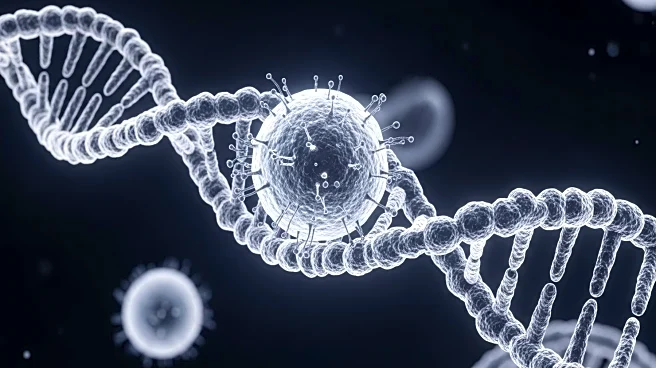What's Happening?
Recent research has highlighted the role of Fas apoptotic inhibitor molecule 2 (FAIM2) in addressing metabolic dysfunction-associated fatty liver disease (MAFLD). The study found that FAIM2 expression is significantly reduced in the livers of mice and humans with MAFLD. This reduction is linked to the degradation of FAIM2 through the ubiquitin-proteasome pathway, facilitated by the E3 ligase NEDD4L. The absence of FAIM2 exacerbates metabolic disorders induced by high-fat diets, leading to increased body weight, blood glucose levels, and liver damage. Conversely, overexpression of FAIM2 in mice alleviates these symptoms, suggesting its protective role against MAFLD.
Why It's Important?
The findings underscore the potential of FAIM2 as a therapeutic target for MAFLD, a condition that affects a significant portion of the U.S. population due to rising obesity rates. By understanding the mechanisms through which FAIM2 operates, particularly its interaction with CRTC2 and its role in autophagy, new treatments could be developed to mitigate the progression of fatty liver diseases. This could have substantial implications for public health, reducing the burden of liver-related diseases and associated healthcare costs.
What's Next?
Further research is needed to explore the therapeutic applications of FAIM2 modulation in humans. Clinical trials could be initiated to test the efficacy of FAIM2-based treatments in reducing liver fat accumulation and improving metabolic health. Additionally, understanding the detailed molecular pathways involving FAIM2 could lead to the development of drugs that enhance its expression or mimic its function.
Beyond the Headlines
The study also opens avenues for exploring the broader implications of autophagy in metabolic diseases. As FAIM2 is involved in the degradation of CRTC2 through autophagy, this highlights the potential of targeting autophagic pathways in treating metabolic disorders. This could lead to a paradigm shift in how such diseases are approached, focusing on cellular degradation processes rather than solely on metabolic regulation.










